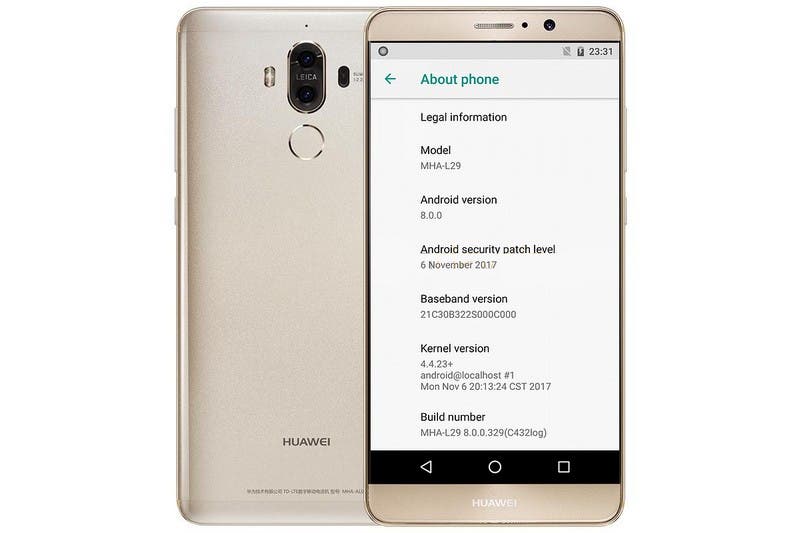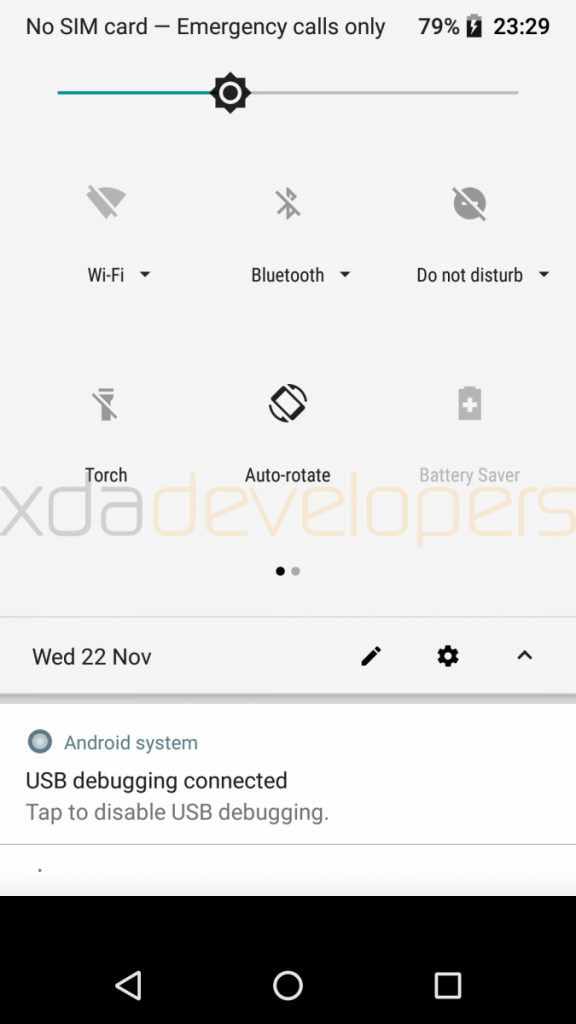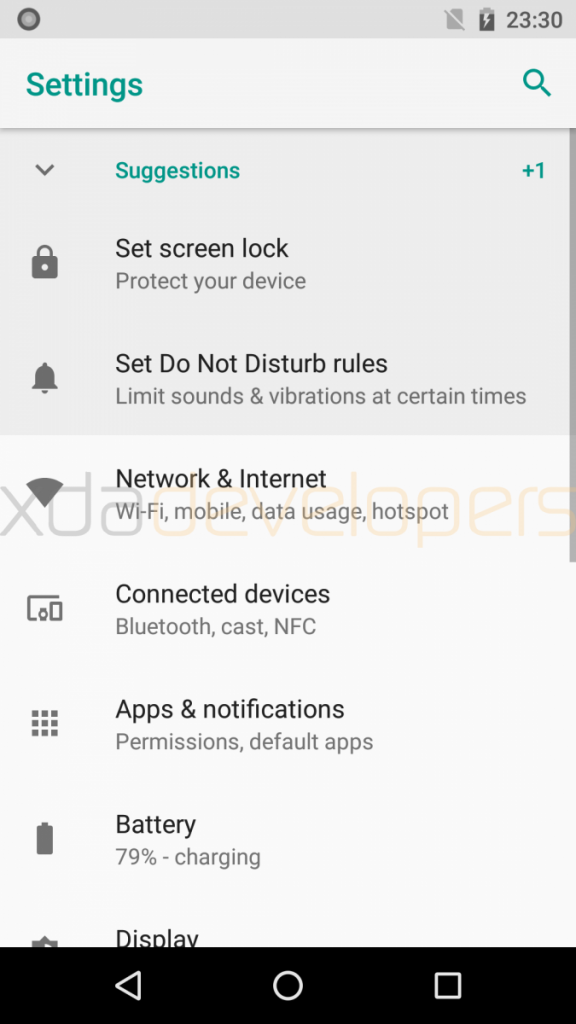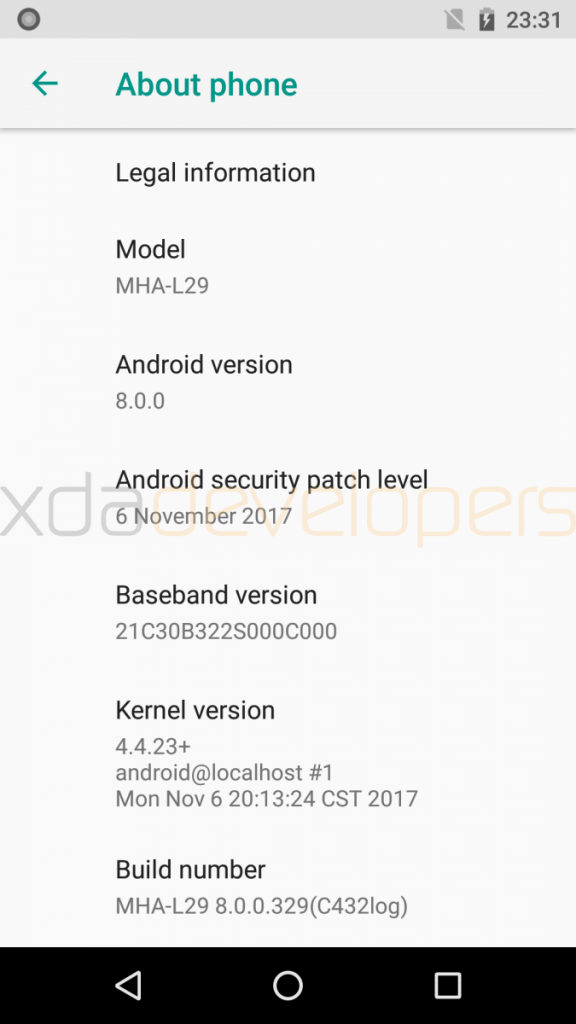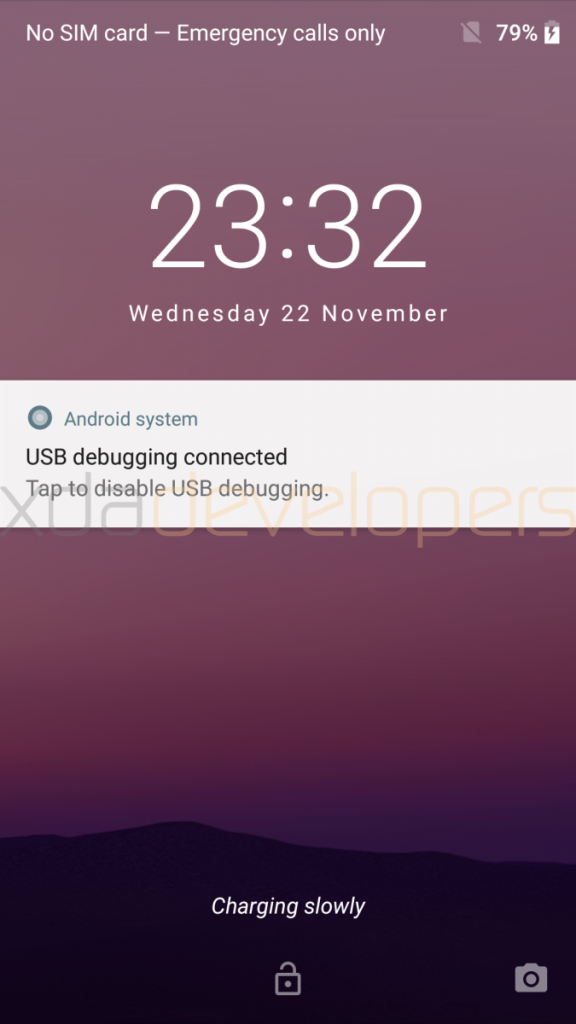During Google’s I/O the company unveiled Project Treble, something that will revolutionize Android updates in the next week, and can be a strong hand to cut the high numbers of Android fragmentation.
Project Treble modularized Android OS framework by separating it from vendor code. In other words, this allow OEMs to start work on newer updates without needing to wait vendor’s, such as Qualcomm or MediaTek, to update its own code.
As part of Vendor Test Suite, All Treble enabled devices should be able to boot a generic AOSP build. Google put some pressure over manufacturer making Project Treble a need for any smartphone launched with Android Oreo. Apart from the already growing number of devices meeting this criteria, there are few tests around the web, but now the folks at XDA managed some big stuff once again by booting Stock Android Oreo on the Huawei Mate 9, that apparently supports Project Treble.
The pictures above come from the Huawei 2016’s flagship running a generic fully stock version of Android Oreo. Initally the handset arrived with Android Nougat 7.0 with Emotion UI running atop. You may ask, how this phone meet the requirements for Project Treble?
If you recall, Google and Huawei have built a strong relationship over the years, since the company manufactured the 2015’s Nexus 6P. The company also was the number one Google’s choice for making the Pixel phones, but apparently the OEM and the Alphabet owned company never found an agreement.
Due to the bonds between Google and Huawei, the Chinese behemoth has worked to meet requirements of Project Treble for a long time, that’s explain why the last year flagship can boot stock Android over the Project Treble way of doing so. According to the developers, the Huawei Mate 9 was the best choice due to the huge differences between EMUI and Stock Android.
Apparently the procedure to boot Oreo in Mate 9 didn’t need any huge change in software part neither on the handset Kernel. This was the first time that the Huawei Mate 9 boot an Android AOSP ROM, and the first time that someone outside Google and Manufacturers successfully test Project Treble capabilities.
The current process of manufacturers to update their handsets is quite slow, with Project Treble this can change in the future. However we haven’t seen this happening until the moment, of course we’ll need to wait some months for Android P release, to really see how the Project Trebles enabled devices will do in getting updated to the newest OS.
Due to Project Treble certification any OEM releasing an Android smartphone should make sure that the handset can also boot a Generic AOSP ROM. This also means a lot for the future of Custom ROMs and Custom updates, even if the OEMs still slowdown the process, any developer can boot an updated version of Android in any smartphone with Treble in a 1-day job.
The developers shared a video in the following link where you can check the Huawei Mate 9 running fully functional Android Oreo 8.0. Are you an Android enthusiast? What are your opinions about Project Treble and the barriers that it may break, let us know in the comments below.

